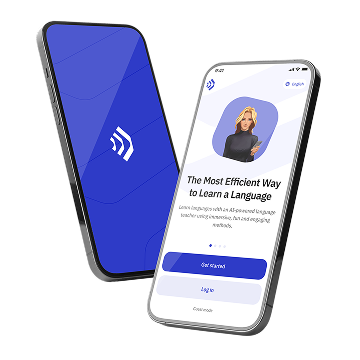Art and language are intimately connected. Both are forms of expression, and both can provide deep insights into a culture. By combining these two elements, you can enrich your language learning experience and make it more engaging. The Guggenheim Museum Bilbao offers a plethora of opportunities to practice Spanish in a context that is both stimulating and educational.
Guided Tours and Audio Guides
One of the best ways to immerse yourself in the Spanish language at the Guggenheim is by taking a guided tour. The museum offers tours in Spanish, which provide a fantastic opportunity to listen to native speakers discuss art. Pay attention to the vocabulary used by the guides, especially terms related to art and culture. Words like “escultura” (sculpture), “pintura” (painting), “exposición” (exhibit), and “museo” (museum) will become part of your vocabulary.
If a guided tour isn’t your style, you can opt for an audio guide. The museum provides audio guides in Spanish that you can listen to at your own pace. This allows you to focus on pronunciation and intonation, which are crucial aspects of language learning. Additionally, audio guides often come with transcripts, so you can read along as you listen, reinforcing your comprehension skills.
Reading Descriptions and Plaques
Every piece of art in the museum is accompanied by a description or plaque that provides information about the artwork and the artist. These descriptions are often written in both Spanish and English, making it easier for you to compare and understand the text. As you read these descriptions, jot down any unfamiliar words and look them up later. This will help you expand your vocabulary and improve your reading comprehension.
For instance, you might come across a description like this: “Esta escultura monumental de acero inoxidable fue creada por el artista estadounidense Richard Serra.” Translated, this means: “This monumental stainless steel sculpture was created by the American artist Richard Serra.” By comparing the Spanish and English texts, you can learn new words and phrases in context.
Workshops and Educational Programs
The Guggenheim Museum Bilbao offers a variety of workshops and educational programs, many of which are conducted in Spanish. These programs are designed to engage visitors of all ages and backgrounds, making them ideal for language learners. Participating in a workshop allows you to practice speaking Spanish in a relaxed and informal setting. You’ll also have the opportunity to interact with other participants, further enhancing your conversational skills.
For example, you might join a painting workshop where you learn to describe your artwork in Spanish. You could say, “Estoy pintando un paisaje con montañas y un río” (I am painting a landscape with mountains and a river). Such activities not only improve your language skills but also make the learning process more enjoyable.
Exploring Specific Artworks
The Guggenheim Museum Bilbao is home to a vast collection of contemporary art, including works by renowned artists such as Jeff Koons, Louise Bourgeois, and Anish Kapoor. Exploring these artworks can provide a wealth of opportunities to practice Spanish.
Jeff Koons’ “Puppy”
One of the most iconic pieces at the Guggenheim is Jeff Koons’ “Puppy,” a giant floral sculpture of a dog. This artwork is a great starting point for practicing descriptive language. You can describe the size, colors, and materials used in the sculpture. For example:
“El ‘Puppy’ de Jeff Koons es una escultura enorme hecha de flores de colores brillantes. La escultura tiene la forma de un perro y está cubierta de petunias, begonias y margaritas.”
Translated, this means: “Jeff Koons’ ‘Puppy’ is an enormous sculpture made of brightly colored flowers. The sculpture is shaped like a dog and is covered in petunias, begonias, and daisies.”
Louise Bourgeois’ “Maman”
Another striking piece is Louise Bourgeois’ “Maman,” a giant spider sculpture that stands outside the museum. This artwork can help you practice more complex descriptive language and express your feelings and reactions. For example:
“‘Maman’ de Louise Bourgeois es una escultura de araña gigante. La escultura está hecha de bronce y acero inoxidable y tiene una presencia impresionante y un poco inquietante. Me hace sentir pequeño e insignificante.”
Translated, this means: “Louise Bourgeois’ ‘Maman’ is a giant spider sculpture. The sculpture is made of bronze and stainless steel and has an impressive and somewhat unsettling presence. It makes me feel small and insignificant.”
Anish Kapoor’s “Tall Tree and the Eye”
Anish Kapoor’s “Tall Tree and the Eye” is another fascinating piece that can help you practice your Spanish. This reflective sculpture consists of stainless steel spheres that create a mesmerizing visual effect. Here’s how you might describe it:
“‘Tall Tree and the Eye’ de Anish Kapoor es una escultura compuesta por esferas de acero inoxidable. Las esferas reflejan el entorno, creando un efecto visual hipnótico. La escultura parece cambiar de forma dependiendo del ángulo desde el cual se mire.”
Translated, this means: “Anish Kapoor’s ‘Tall Tree and the Eye’ is a sculpture composed of stainless steel spheres. The spheres reflect the surroundings, creating a hypnotic visual effect. The sculpture appears to change shape depending on the angle from which it is viewed.”
Interactive Activities
In addition to exploring the artworks, there are several interactive activities you can engage in to practice your Spanish at the Guggenheim Museum Bilbao.
Creating Your Own Art
One way to immerse yourself in the language is by creating your own art inspired by the exhibits. You can then describe your artwork in Spanish, either in writing or verbally. This exercise allows you to practice using art-related vocabulary and descriptive language.
For example, if you create a painting, you might describe it as follows:
“He pintado una escena de la ciudad de Bilbao. En mi pintura, se puede ver el Museo Guggenheim con su arquitectura distintiva y el río Nervión. He usado colores vivos para capturar la energía de la ciudad.”
Translated, this means: “I have painted a scene of the city of Bilbao. In my painting, you can see the Guggenheim Museum with its distinctive architecture and the Nervión River. I have used vibrant colors to capture the energy of the city.”
Writing Reviews and Essays
Another effective way to practice your Spanish is by writing reviews or essays about the artworks and exhibits you have seen. This activity allows you to practice your writing skills and organize your thoughts in Spanish. You can write about your favorite piece, a particular exhibit, or your overall experience at the museum.
For example, you might write a review like this:
“Mi pieza favorita en el Museo Guggenheim Bilbao es ‘Puppy’ de Jeff Koons. Esta escultura floral es impresionante tanto en tamaño como en detalle. Me encanta cómo las flores cambian con las estaciones, lo que le da una nueva vida a la escultura cada vez que la visito. Además, la ubicación de ‘Puppy’ en la entrada del museo la convierte en una bienvenida alegre y colorida para todos los visitantes.”
Translated, this means: “My favorite piece at the Guggenheim Museum Bilbao is Jeff Koons’ ‘Puppy.’ This floral sculpture is impressive in both size and detail. I love how the flowers change with the seasons, giving new life to the sculpture each time I visit. Additionally, the location of ‘Puppy’ at the museum’s entrance makes it a cheerful and colorful welcome for all visitors.”
Discussion Groups and Language Exchange
Many museums, including the Guggenheim, host discussion groups and language exchange events. These gatherings provide an excellent opportunity to practice speaking Spanish with other learners and native speakers. You can discuss your thoughts on the exhibits, share your interpretations of the artworks, and ask questions. Engaging in such conversations helps improve your fluency and confidence in speaking Spanish.
For example, you might participate in a discussion about Louise Bourgeois’ “Maman” and share your thoughts:
“Me parece que ‘Maman’ representa la fuerza y la vulnerabilidad de la maternidad. Aunque la escultura es imponente y un poco aterradora, también tiene una calidad protectora. Creo que Bourgeois quería mostrar cómo las madres pueden ser fuertes y protectoras al mismo tiempo.”
Translated, this means: “I think ‘Maman’ represents the strength and vulnerability of motherhood. Although the sculpture is imposing and a bit scary, it also has a protective quality. I believe Bourgeois wanted to show how mothers can be strong and protective at the same time.”
Practical Tips for Learning Spanish at the Museum
To make the most of your language learning experience at the Guggenheim Museum Bilbao, here are some practical tips:
Bring a Notebook and Dictionary
Carry a small notebook and a Spanish-English dictionary with you. As you explore the museum, jot down any new words or phrases you encounter. Look up their meanings and practice using them in sentences. This will help reinforce your learning and expand your vocabulary.
Practice Active Listening
When participating in guided tours or listening to audio guides, practice active listening. Focus on the pronunciation, intonation, and vocabulary used by the speakers. Try to understand the main ideas and key details. If possible, listen to the same audio guide multiple times to improve your comprehension.
Engage with Museum Staff
Don’t be afraid to engage with the museum staff in Spanish. Whether you’re asking for directions, seeking information about an exhibit, or purchasing a ticket, use these opportunities to practice speaking. The staff are usually friendly and willing to help, making it a great way to build your confidence in using the language.
Join a Language Learning Group
Consider joining a language learning group or club that organizes visits to museums and cultural sites. These groups often provide guided tours and discussions in Spanish, allowing you to practice the language in a supportive environment. You can also share your experiences and learn from other members.
Use Technology to Your Advantage
There are many language learning apps and online resources that can complement your museum visit. Use apps like Duolingo, Babbel, or Memrise to practice Spanish vocabulary and grammar before and after your visit. You can also find online forums and communities where you can discuss art and language learning with fellow enthusiasts.
Conclusion
Learning Spanish with Bilbao’s Guggenheim Museum art is a unique and enriching experience that combines the beauty of contemporary art with the joy of language learning. By immersing yourself in the museum’s exhibits, participating in guided tours and workshops, and engaging with other visitors and staff, you can enhance your Spanish skills in a dynamic and enjoyable way. So, the next time you visit Bilbao, make sure to spend some time at the Guggenheim Museum and let the art inspire your language learning journey.





